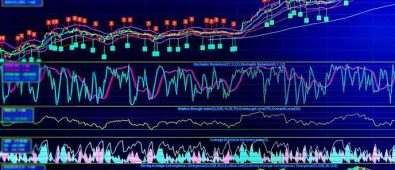In today’s complex financial world, risk comes in many forms that can impact the balance sheets of corporations, investors, and consumers alike. Credit risk and market risk are two such risks that constantly interact yet are often misunderstood. While both pose potential threats, sound decision-making must understand their key distinctions. Credit risk stems from the possibility that counterparties in a transaction may default on their contractual obligations, like an individual failing to repay a loan or a corporation declaring bankruptcy without honouring its debt. On the other hand, market risk encompasses how the values of assets like stocks, bonds, commodities, and currencies can fluctuate due to shifts in broader market forces outside any single entity’s control, such as changes in interest rates, economic performance, or current events. By examining the core differences between these forms of risk, this article seeks to provide insight into how their management requires tailored strategies and how their relative impacts may wax and wane across industries and market cycles.
Defining credit risk and market risk: key differences
Credit risk can be broken down into two main types: individual credit risk and systemic credit risk. Personal credit risk relates to a borrower’s inability or unwillingness to fulfil their obligations. In contrast, systemic credit risk refers to broad-based failures in a financial system due to economic downturns, fraud, or contagion effects from one entity’s failure.
In contrast, market risk reflects the potential for losses from changes in asset values based on fluctuations in broad market conditions and other factors. Creditors are exposed to these risks through default on loans or investments, while traders can face losses due to volatility impacting pricing and liquidity.
Credit risk explained: factors influencing a borrower’s ability to repay debt
Credit risk is often linked to a borrower’s creditworthiness, which is evaluated based on various factors such as financial stability, past payment history, and level of debt. These factors can help predict the likelihood of default and inform lenders’ decisions on interest rates and loan terms. Additionally, macroeconomic conditions like unemployment rates and industry trends can also impact the ability of borrowers to repay their debts, making credit risk management a critical component for any creditor. Click here to learn more about credit risk in trading.
Market risk explained: how external factors fuel volatility and impact asset values
Unlike credit risk, market risk is not tied to individual entities but to the broader economic environment. Changes in interest rates or consumer demand can cause fluctuations in stock values, while current events like trade wars or natural disasters can impact commodity prices. Market risk is a constant concern for traders and investors, who must continually assess and adjust their portfolios to mitigate potential losses.
Managing credit risk vs. market risk: tailored strategies for optimal results
The nature of these risks differs significantly, as do the strategies used to manage them. For instance, creditors may diversify their loan portfolios or require collateral for higher-risk borrowers to mitigate credit risk. At the same time, traders may use tools like options or futures contracts to hedge against market risk.
Additionally, incentives, regulations, and industry-specific practices can all influence how credit and market risks are managed within specific sectors. Effective management of both risks requires a thorough understanding of their differences and the unique factors that can impact their severity and likelihood.
The dynamic nature of credit risk and market risk: industry-specific considerations
While credit risk and market risk are universal concerns, the level of exposure and impact can vary significantly across industries. For example, banks face significant credit risk due to the large amount of loans they hold, while trading firms may be more exposed to market risk. Furthermore, market cycles and industry-specific factors can also influence the level of risk faced. During economic downturns, credit risk may increase as unemployment rises, while market volatility can spike during times of uncertainty.
Conclusion: Understanding the distinctions to navigate risks effectively
In today’s interconnected financial landscape, it is essential to understand and manage risks like credit and market risks to avoid financial losses. By defining and differentiating these two forms of risk, we can see how they require tailored strategies for effective management and how their relative impacts may shift over time and across industries.
Although the complexity of risk in trading can be daunting, a comprehensive understanding of credit and market risks can help decision-makers navigate uncertain times successfully. So, it is crucial to continue evaluating and adapting risk management strategies to ensure optimal outcomes in the constantly evolving financial landscape. So, a deep understanding of credit risk and market risk can be beneficial in making informed decisions and mitigating potential threats related to trading activities.



